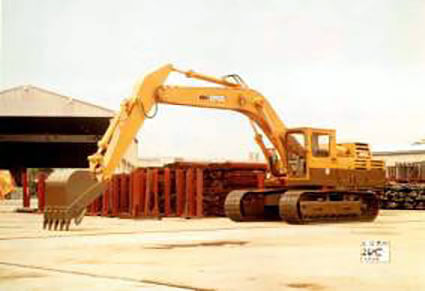1970
Since this era, the focus of domestic demand gradually started shifting from bulldozers to hydraulic shovels. Additional considerations, such as ease of operation, also became an important aspect of design.

Hydraulic excavators started to be used more, and there were 11 manufacturers who produced hydraulic shovels in Japan. While the demand for Hydraulic excavators was rising, sales of the existing model, 20H, were lagging. 20HT was developed in the hope of breaking this trend. Like 10HT, it adopted the track of a bulldozer for better durability and movability. It was equipped with a long arm that expanded the range of reach.
Weight: 18500kg, Bucket capacity: 0.45-0.9m3
Hydraulic excavator
Since its first emergence in 1951, it took only 50 years for the hydraulic shovel to establish its primary position on construction sites worldwide. Its size ranges from mini to super size depending on the scale of construction, and during the half century, it kept evolving by achieving a minimum rear-swing radius and adapting styles that would work with characteristics of each site. Mirroring the movement of a human hand, a hydraulic shovel will continue to evolve during the 21st century.